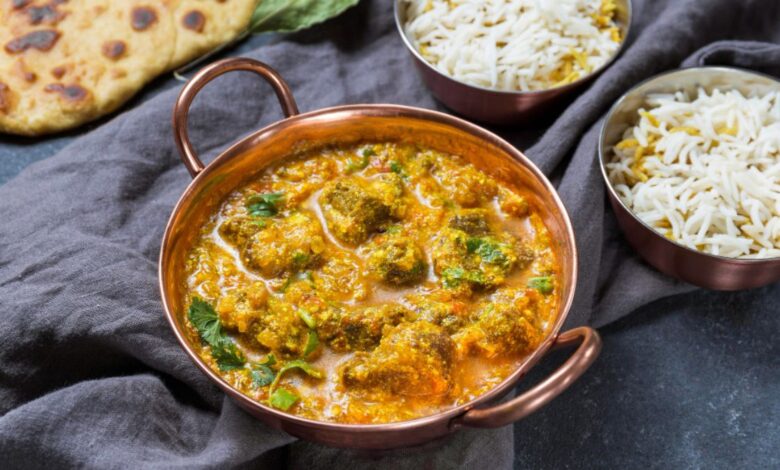Kari Kinnaslapi: Unraveling the Threads of an Ancient Tradition

Introduction
Every culture has its stories, passed down not only in words but in objects, rituals, and practices that define its people. In a world where fast fashion dominates and traditions are often lost, there’s something uniquely precious about the art of handmade textiles. Today, we’ll uncover the mystery and beauty of one such craft—kari kinnaslapi. It may not be a household name, but once you delve into its history, techniques, and cultural significance, you’ll realize how kari kinnaslapi is far more than just thread and needle. It’s an expression of identity, resilience, and art.
What is Kari Kinnaslapi?
At first glance, you might be asking yourself, “What in the world is kari kinnaslapi?” Well, you’re not alone! Even among textile enthusiasts, it’s a term that raises a few eyebrows. Kari kinnaslapi refers to an ancient technique of decorative hand stitching, often associated with the colder regions of Scandinavia and the Baltic Sea area. Traditionally used to make warm mittens or gloves, the intricate designs that adorn these pieces are what set them apart. But there’s more—these patterns often tell stories. From symbols of protection to motifs representing family history, kari kinnaslapi stitches have served not only functional but also deeply symbolic purposes.
The Origins of Kari Kinnaslapi
A Tale Woven Through Time
You can trace kari kinnaslapi back to centuries-old practices in northern Europe. As the winters in these regions were long and harsh, practical clothing was an absolute necessity. Mittens, gloves, and other handwear items were often knit from wool, a material known for its warmth and durability. But, in true artistic spirit, the women who made these items didn’t just settle for basic utility. They infused their creations with creativity and meaning.
The word “kari” is often connected with “karjas,” a term meaning shepherd or guardian. It’s believed that these mittens acted as protective talismans, guarding the wearer against both physical and spiritual coldness. “Kinnaslapi,” on the other hand, directly translates to “glove patch” or “mitten flap,” hinting at the practical and artistic dual nature of these creations.
Beyond Functionality
Interestingly, the kari kinnaslapi tradition wasn’t just about crafting everyday wear. The stitches, patterns, and colors used in these garments varied greatly from region to region, even from family to family. Each piece could tell you something about where the wearer came from or what they valued.
Some of the most famous kari kinnaslapi designs are linked to wedding traditions. For example, a young woman would spend months, even years, crafting a pair of decorated mittens for her future husband. These gloves weren’t just functional—they symbolized love, commitment, and the ability to provide warmth and protection.
The Art of Kari Kinnaslapi
Intricate Patterns
The most captivating element of kari kinnaslapi is its intricate designs. The process begins with the selection of wool—usually dyed in natural colors such as deep reds, earthy browns, or rich blues. The designs are geometric, often featuring repeating shapes like diamonds, triangles, and zigzags. These patterns might look simple from afar, but up close, the precision is breathtaking.
Most importantly, these motifs carry meaning. Triangles, for instance, often symbolize the elements—earth, water, and fire—while zigzag lines could represent rivers or journeys. In some regions, tiny, woven crosses were believed to protect the wearer from evil spirits.
- Common Patterns in Kari Kinnaslapi:
- Diamonds: Signifying the cycle of life and rebirth
- Zigzags: Representing protection or natural forces
- Crosses: Symbols of protection from harm
- Curved lines: Often associated with rivers or natural landscapes
Techniques: A Labor of Love
When you think about how these mittens were made, it’s hard not to be amazed. Every stitch had to be done by hand. Modern machinery can replicate some of these patterns, but the charm and authenticity lie in the slight imperfections that come from human hands.
To create these pieces, the artisan starts with a base of knitted wool, then embroiders over the top in contrasting colors. The needlework is painstaking, often requiring days or even weeks of focus to complete a single pair of mittens. But for those who crafted them, it wasn’t just about the final product—it was about the meditative process of creation.
Modern-Day Kari Kinnaslapi
A Resurgence in Craft
Although kari kinnaslapi seemed to fade away with the rise of industrialized textile production, there’s been a recent resurgence in interest, especially among younger generations. People are once again finding joy in slow, intentional work, and the unique artistry of these traditional mittens has caught the eye of crafters around the world.
Many artisans are now modernizing kari kinnaslapi patterns, creating contemporary designs while still honoring the traditional techniques. From winter fashion collections to DIY kits, kari kinnaslapi is making a well-deserved comeback. It’s not unusual to see these mittens in pop-up shops at Christmas markets or on the pages of artisanal fashion blogs.
Why the Revival?
In today’s world, there’s something irresistible about the idea of returning to handmade, meaningful art. Fast fashion and mass-produced goods have left many people yearning for craftsmanship, quality, and individuality. Kari kinnslapi ticks all those boxes. Plus, with the rise of eco-conscious fashion, the natural, durable materials used in this craft align perfectly with the slow fashion movement.
FAQ About Kari Kinnaslapi
- What does the name “kari kinnaslapi” mean?
- “Kari” refers to protection or guardianship, while “kinnaslapi” means “glove patch.” Together, the term refers to protective, hand-stitched mittens with cultural and artistic significance.
- Is kari kinnaslapi difficult to learn?
- Learning the basics of embroidery isn’t too hard, but kari kinnasapi patterns can be complex. With some patience and practice, however, anyone can give it a try.
- Where can I buy authentic kari kinnaslapi?
- Authentic pieces are available through specialized crafters, artisans, and online marketplaces that focus on handmade goods. If you’re lucky, you might also find them in Scandinavian markets during the holiday season.
- Can I make my own kari kinnaslapi?
- Yes! There are many tutorials, patterns, and kits available online. While it may take some practice, making your own pair of mittens can be incredibly rewarding.
- What’s the significance of kari kinnaslapi designs?
- The patterns often carry deep symbolic meaning, with each shape representing something important to the maker—whether it’s protection, family heritage, or natural elements.
Conclusion
The art of kari kinnaslapi is more than just a textile tradition—it’s a tapestry of culture, history, and personal expression. Whether you’re a seasoned crafter or someone looking to reconnect with meaningful, slow-made art, kari kinaslapi offers a world of inspiration. Its revival is proof that even in our fast-paced, digital age, there’s still room for ancient wisdom, passed down through threads and stitches. Next time you slip on a pair of gloves, take a moment to appreciate the stories they could be telling, just like the timeless mittens of kari kinnalapi.



